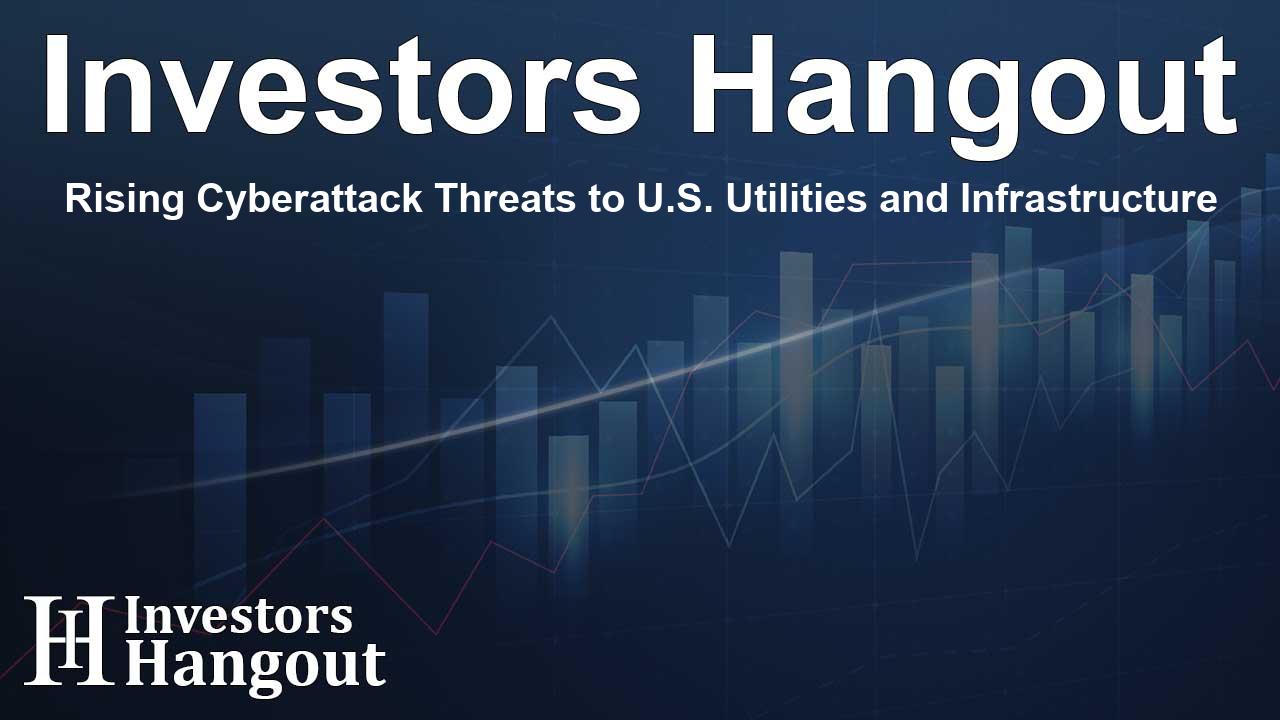Rising Cyberattack Threats to U.S. Utilities and Infrastructure

A Surge in Cyberattacks Against U.S. Utilities
Cyberattacks on U.S. utilities have skyrocketed by 70% this year compared to the previous year. This spike has raised concerns among industry experts about the rising threats to crucial infrastructure. Vulnerabilities have become more pronounced as the utilities sector rapidly digitalizes to accommodate increasing energy demands.
The Growing Target of Utilities
U.S. utilities are viewed as attractive targets for cybercriminals. According to Douglas McKee, a specialist from a cybersecurity firm, many utilities operate with outdated software, making them low-hanging fruit for attacks. Though no major utility has been severely impacted yet, experts warn an organized attack could have catastrophic consequences, jeopardizing essential services and leading to considerable financial loss.
Statistics Highlight the Severity
The latest data demonstrates the alarming trend. An average of 1,162 cyberattacks occurred on utilities through August, a stark increase from 689 attacks recorded in the same timeframe last year. This distressing figure underscores a critical need for enhanced cybersecurity measures across the industry.
The Energy Sector's Vulnerability
The energy sector notably faces heightened risks. A major incident in 2021 involved Colonial Pipeline, which had to shut down due to a devastating cyberattack that impacted its operations significantly. Such incidents have prompted discussions regarding the security of the U.S. energy infrastructure.
Recent Incidents and Their Implications
Companies such as Halliburton recently reported unauthorized access to their systems, which underscores the real and present threat of breaches within vital organizations. The utilities sector relies heavily on less sophisticated Internet of Things (IoT) and Incident Command System (ICS) technologies, which often lack robust cybersecurity protocols when compared to leading technology firms like Apple and Microsoft.
Regulatory Compliance Challenges
Compliance with regulations from agencies like the North American Electric Reliability Corp's (NERC) provides only minimal protection against cyber threats. As the grid expands to connect with new users, including Gen-AI data centers, the opportunities for potential attacks multiply.
Challenges Ahead as Cyberattacks Rise
Earlier analyses from NERC highlighted that the number of vulnerable points in the electrical networks has been increasing at an alarming rate of about 60 new points each day. This trend requires urgent attention from both the government and utility operators to reinforce their defenses against cyber threats.
The Ripple Effect of Cyber Breaches
The consequences of ransomware attacks have increasingly impacted major U.S. corporations, illustrating the broader risks associated with cyber threats. An average data breach in the energy sector has escalated to a staggering cost of $4.72 million, according to 2022 reports from IBM, posing a significant financial burden on affected companies.
Future Predictions for Cybersecurity
Experts note that the combination of an upcoming election year and the escalating threat landscape could lead to an increase in malicious activities aimed at critical infrastructure. Nataliia Zdrok, a Senior Threat Intelligence Analyst, emphasized that utilities, energy grids, and communication networks might be particularly vulnerable during this politically charged time.
Frequently Asked Questions
What has caused the surge in cyberattacks on U.S. utilities?
The increase is attributed to outdated software used by many utilities and the rapid digitalization of their services, making them easier targets for cybercriminals.
How many cyberattacks did U.S. utilities face this year?
U.S. utilities experienced around 1,162 cyberattacks, up from 689 the previous year, indicating a significant rise in threats.
What are the potential consequences of a major cyberattack?
A coordinated cyberattack could lead to catastrophic impacts on essential services and substantial financial losses across the affected utilities.
How can utilities improve their cybersecurity?
Utilities must upgrade their software, enhance their cyber defenses, and adhere to robust regulatory compliance standards to better protect against threats.
Why are elections significant in the context of cyberattacks?
Election years often see an uptick in cyber activities against critical infrastructure, making it vital for utilities to bolster their cybersecurity measures during such times.
About Investors Hangout
Investors Hangout is a leading online stock forum for financial discussion and learning, offering a wide range of free tools and resources. It draws in traders of all levels, who exchange market knowledge, investigate trading tactics, and keep an eye on industry developments in real time. Featuring financial articles, stock message boards, quotes, charts, company profiles, and live news updates. Through cooperative learning and a wealth of informational resources, it helps users from novices creating their first portfolios to experts honing their techniques. Join Investors Hangout today: https://investorshangout.com/
Disclaimer: The content of this article is solely for general informational purposes only; it does not represent legal, financial, or investment advice. Investors Hangout does not offer financial advice; the author is not a licensed financial advisor. Consult a qualified advisor before making any financial or investment decisions based on this article. The author's interpretation of publicly available data shapes the opinions presented here; as a result, they should not be taken as advice to purchase, sell, or hold any securities mentioned or any other investments. The author does not guarantee the accuracy, completeness, or timeliness of any material, providing it "as is." Information and market conditions may change; past performance is not indicative of future outcomes. If any of the material offered here is inaccurate, please contact us for corrections.